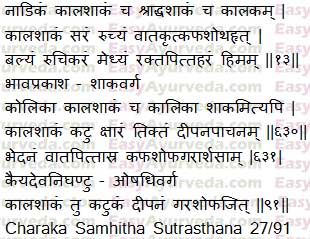White jute Uses, Qualities, Remedies, Research
By Dr Renita D’Souza
White jute is a natural source of jute fiber. The plant is used as vegetable and also possesses medicinal values. It is used as a remedy for indigestion, fever, ascites, tumors, cystitis, dysuria and gonorrhea etc. It is called Kala Shaaka in Ayurveda. Its seed is known to be purgative in nature. Leaves act as laxative and can be used in piles. It is a good source of antioxidant and hence can be used to prevent cardiac diseases, diabetes, hypertension, cancer etc.
Read – Chanchu – Jute: Corchorus fascicularis Uses, Dose, Research
The fiber extracted from this plant is considered to be finer and higher quality than fiber from Corchorus olitorius. Young leaves and shoots are used in salads or cooked as vegetable. In areas with hot summers it is used as substitute for spinach. Dried leaves are used in soups to make it thick. In Japan, the dry jute leaves are used as substitute of coffee and tea.
Read – Malabar Spinach – Uses, Remedies, Benefits, Research
Botanical Name – Corchorus capsularis
Synonyms – Corchorus cordifolius Salisb, Corchorus marua
Family – Tiliaceae
Table of Contents
Vernacular Name
Sanskrit Name – Kalashaaka
English Name – White jute
Hindi Name – Patta shaak, Narimcha, Nadi ka shaka,Tita pata
Bengali Name – Nalitha shaka, Koshta, Titapaata, Chinaltepatha, Nachi
Marathi Name – Chonche, Sana, Isabanda, Kshudra chanchu
Gujarati Name – Chuncha
Kannada Name – Senabu
Konkani Name – Tupkati
Tamil Name – Naru valli
Malayalam Name – Chanachedi
Read – Amaranth Uses, Qualities, Remedies, Research
Medicinal Qualities
Taste – Pungent, bitter
Saraka – brings about mobility
Ruchya – improves taste
Hima – cold in potency
Deepana – kindles digestive fire
Pachana – promotes digestion
Kshaara – alkaline in nature
Bhedana – helps in easy passage of bowels (mild laxative)
Effect on Tridosha
Vatakrth – increases vata
Balances kapha dosha
Read – Karpasa – Cotton Plant Uses, Dose, Research, Side Effects
Uses, Remedies
Traditional uses
Shotha – swelling and inflammation
Shopha – Edema
Balya – promotes strength
Ruchikaram – improves taste
Medhyam – increases intelligence and memory
Raktapitta – bleeding disorders
Gara visha – toxic conditions
Arsha – piles
Remedies
- Hot infusion of white jute leaves is used in fever. Intake of this causes excretion of sweat and urine. Relieves mouth dryness.
- Leaves cold infusion is used to treat indigestion and diarrhea. It improves appetite and strength.
- In dysentery, the decoction of roots and unripe fruits is used.
Sanskrit Verse

Interaction with medicines, supplements
Can this be used while taking Homeopathic medicine?
Yes. This product does not react with homeopathic medicine.
Can
this medicine be continued while taking supplements like multivitamin tablets,
Omega 3 fatty acids etc?
Yes. Generally, this product goes well with most
of the dietary supplements. However, if you are taking more than one product
per day, please consult your doctor for an opinion.
With western
medicines
Seek your
doctor’s advice if you are taking this product along with other western
(allopathic / modern) medicines. Some Ayurvedic herbs can interact with modern
medicine.
If both Ayurvedic and allopathic medicines are advised together, then it is
best to take Allopathic medicine first, wait for 30 minutes and then take the
Ayurvedic medicine.
Pharmacological Activity
Corchorus capsularis possess cardiotonic, carminative, diuretic, antidysenteric, purgative properties etc (A)
Morphology, Distribution
Morphology
Corchorus capsularis is an erect, annual herb growing up to 1 – 2 meter tall. Stem is straight, slender and usually purplish in color. Leaves are acute, ovate-lanceolate, 5-12 cm long. Flowers are five petaled, yellow in color. Fruits are globular.
Distribution
White jute is probably originated in China. It is now grown in Bangladesh, India, Tropical Africa and also cultivated in Amazon region of Brazil.
Research
Antileishmanial activity – A research study shows that the leaf extract of white jute have potent antileishmanial activity. The study proves that it is an effective leishmanicidal substitute against Leishmania donovani.
Part Used
Leaves, unripe fruit, Roots
Synonyms, Categorization
Sanskrit Synonyms
Naadika, Kalashaaka
Shradhashaaka, Kaalaka
Kolika, Kaalika
Classical Categorization
Bhavaprakasha Nighantu – Shaaka varga
Kaiyadeva Nighantu – Aushadhi varga
Click to Consult Dr Renita D’Souza










